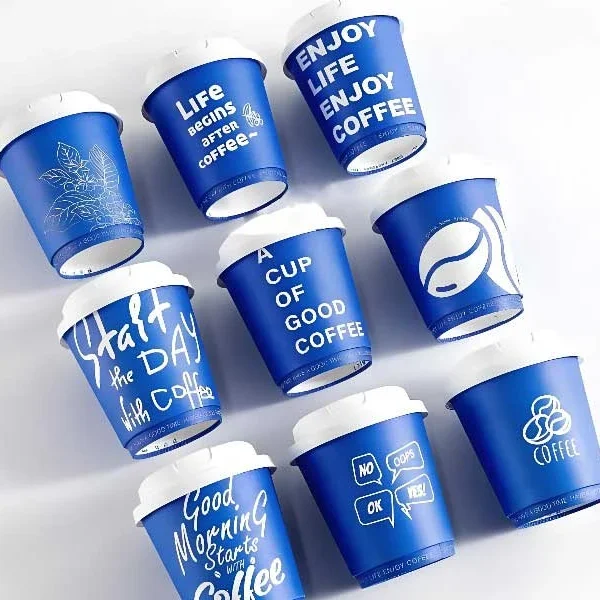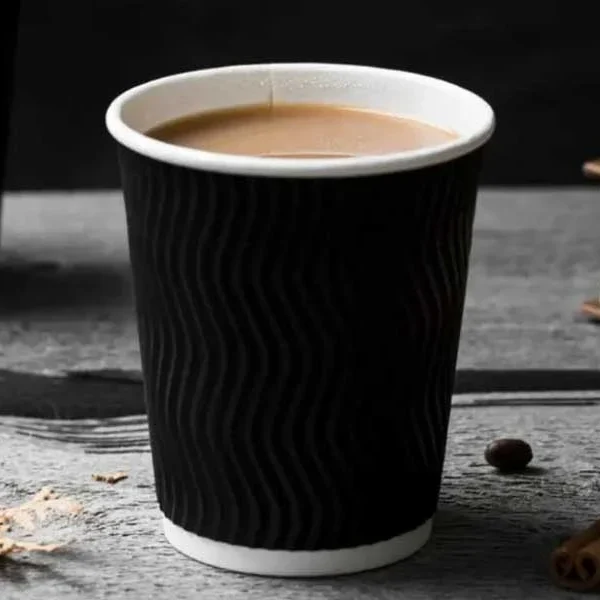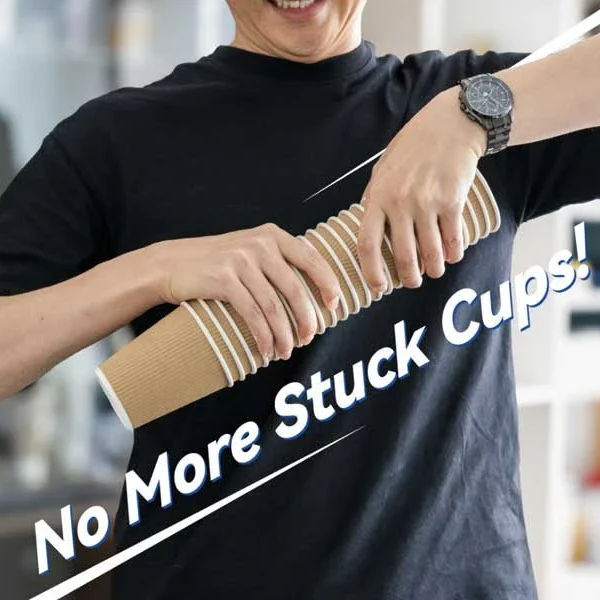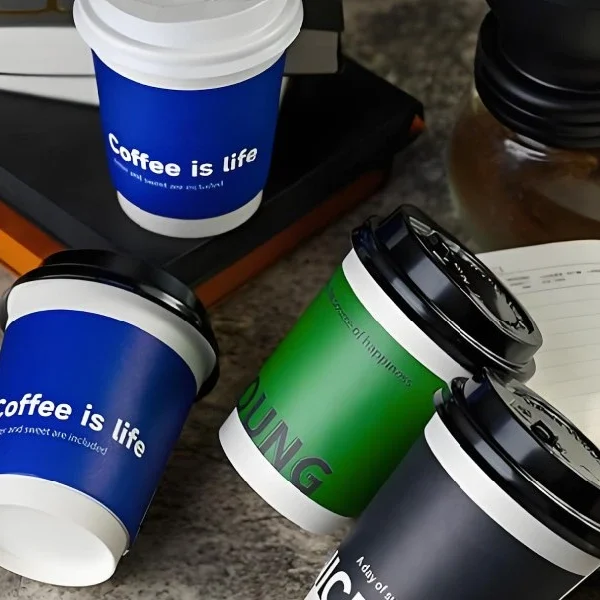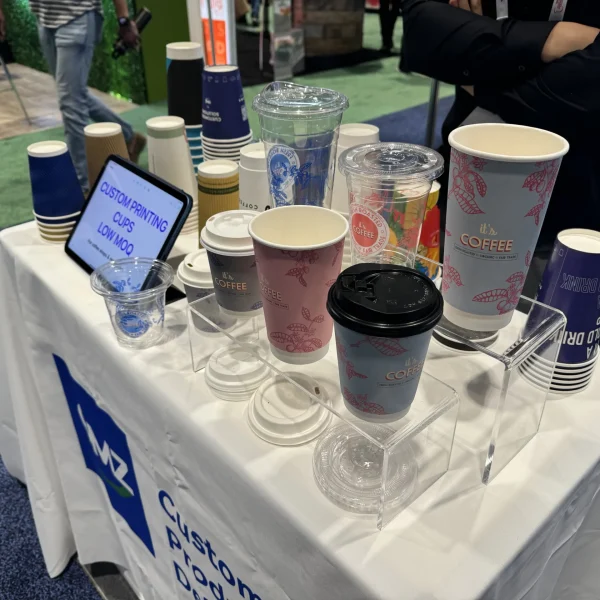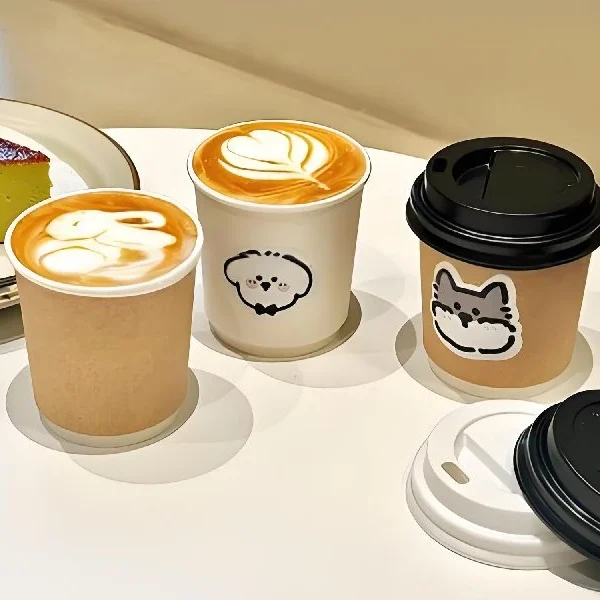Choosing the right coffee cup lids may seem like a small detail, but it’s one that can significantly impact your business. The right lids not only keep drinks secure but also enhance the customer experience, reduce waste, and even promote your brand. Whether you’re running a bustling café, a trendy takeaway spot, or a busy food truck, finding the perfect lid is essential. Let’s dive into the different types of coffee cup lids, what to consider when choosing them, and how they can make a difference for your business.
Types of Coffee Cup Lids
When it comes to coffee cup lids, there’s no one-size-fits-all solution. Here are some of the most common types and their best uses:
Flat Lids with Straw Slot/Hole
Flat lids are a common choice for many cold drinks and are designed to sit flush with the rim of the cup. They have a sleek, simple look that can be very attractive for certain types of drinks.

Features:
✅Flat lid design: Flush with the rim, sleek, simple look, suitable for most standard drinks.
✅Straw slot or straw hole: Often includes a straw slot or straw hole for drinking directly, which can bring more convenience to the user.
✅Secure fit: Designed to fit snugly on the cup to prevent spills and have good leak resistance.
Pros:
- Space-saving: Easy to stack, saving valuable storage space, which is crucial for busy places or smaller storage areas.
- Affordable: Simple design, usually cheaper than other types of lids, so this is an affordable choice for businesses.
- Versatile: Suitable for a variety of beverages, including soda, iced tea and other cold drinks, it is a versatile choice for many different beverages.
Cons
- Limited capacity: Cannot hold a large amount of toppings or other ingredients, which can be a limitation for some specialty drinks.
- Poor aesthetics: May not be as visually appealing for specialty beverages and may detract from the overall appearance of the beverage.
Sip-Through Lids:
Pop-up lids feature a unique mechanism that allows for easy sipping without a straw. This makes them particularly suitable for drinking on the go.

Features:
✅Pop-up mechanism: Features a section that can be pushed open to allow for sipping without a straw, which adds convenience for users who don’t like using straws.
✅Secure fit: Ensures a tight seal to prevent leaks and spills, which makes it a reliable choice for a variety of beverages.
Pros:
- Convenience: Great for drinking on the go, easy sipping without a straw, perfect for busy people.
- Hygiene: Protects the drinking area when closed, which can reduce exposure to contaminants, an important consideration for health-conscious consumers.
- Eco-friendly: Reduces the need for disposable straws, contributing to environmental sustainability efforts.
Cons
- Complexity: Slightly more complex designs can make them more expensive, which may be a consideration for budget-conscious businesses.
- Limited uses: Mainly suitable for hot drinks or drinks that don’t require a straw, limiting their versatility for certain types of drinks.
Dome Lids
Dome lids are designed to provide extra space above the rim, perfect for specialty cold drinks with toppings.

Features:
✅Dome shape: Provides extra space above the rim for a variety of toppings and garnishes.
✅Large opening: Usually has a large hole to insert a straw, spoon, or hold whipped cream and other toppings, enhancing the overall appearance of the drink.
Pros:
- Increased capacity: Great for serving drinks with toppings such as whipped cream, ice cream, or fruit, perfect for specialty drinks.
- Visual: Makes drinks more visually appealing, enhances the customer experience, and may increase sales.
- Versatility: Perfect for serving specialty drinks like smoothies, milkshakes, and bubble tea, it provides versatile options for a variety of beverages.
Cons
- Storage space: Due to its shape, it takes up more storage space, which is a consideration for organizations with limited storage capacity.
- Cost: Usually more expensive than flat lids, which is a consideration for budget-conscious businesses.
Summary Table
| Lid Type | Key Features | Benefits | Drawbacks | Ideal For |
|---|---|---|---|---|
| Flat | Flat design, straw slot/sip hole | Space-saving, cost-effective | Limited capacity, less aesthetic appeal | General cold beverages (sodas, iced teas) |
| Sip-through | Popup mechanism for sipping | Convenient, hygienic, eco-friendly | Slightly more expensive, limited use | On-the-go hot drinks, cold drinks without straws |
| Dome | Dome shape, large opening | Increased capacity, enhanced presentation | Takes up more storage space, more expensive | Specialty drinks (frappes, milkshakes, bubble tea) |
Materials for Coffee Cup Lids
The material of cup lids can impact everything from customer experience to your brand’s sustainability efforts. Here’s a breakdown of common materials:
Plastic Lids (PP, PS, PET):
Plastic lids are the most widely used, offering durability, a secure fit, and heat resistance. PP (polypropylene) and PS (polystyrene) are common choices due to their cost-effectiveness and strength. PET (polyethylene terephthalate) lids, often clear and sleek, are popular for cold beverages. However, while these materials are functional, their environmental impact is significant, and they aren’t always recyclable depending on local facilities.
Compostable Lids:
As the demand for eco-friendly options grows, compostable lids made from materials like PLA (polylactic acid) are becoming more common. These lids are derived from renewable resources like corn starch and are designed to break down in industrial composting facilities. They offer a sustainable alternative but may require specific conditions for composting, making their disposal a key factor to consider.
Paper Lids:
Paper lids are an emerging trend for those seeking fully biodegradable and recyclable options. Made from pressed paperboard, they’re designed to replace plastic lids without sacrificing functionality. While they may not be as durable as plastic, they align with brands focused on sustainability and reducing plastic use.

Are Coffee Cup Lids Recyclable?
Recyclability depends largely on the material and local recycling facilities. Most plastic lids, especially those made from PP and PET, can be recycled, but only if the facilities exist in your area. Compostable and paper lids, on the other hand, require specific composting processes, meaning they might not be suitable for traditional recycling streams. It’s essential to educate customers about proper disposal to maximize the environmental benefits.

Conclusion
Choosing the right coffee cup lid material can make a significant impact on your brand’s sustainability initiatives and customer satisfaction. Whether you prioritize cost, functionality, or environmental responsibility, there are options to fit your needs. As eco-friendly alternatives like compostable and paper lids grow in popularity, offering a mix of materials can help cater to a variety of preferences while keeping your environmental footprint in check.

